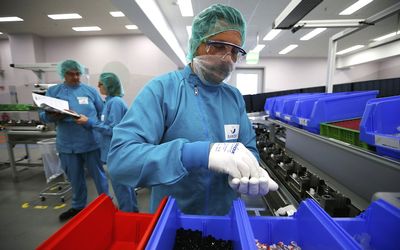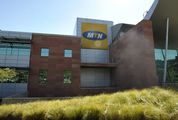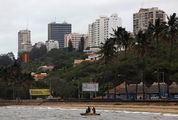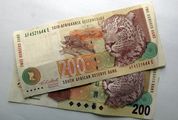COMPETITION among generic drug makers pushes drug prices downwards. But such competition is weak for biologics, a growing, expensive class of drugs. Biologics — large-molecule, protein-based drugs — are made by living organisms, not by chemical processes, which are the source of nonbiologic, or small-molecule, drugs.
Their complexity makes them harder to reverse-engineer than small-molecule drugs, making generic versions of them — called biosimilars — more costly to bring to market.
Comparing insulin (a biologic drug) with aspirin (a small-molecule drug) offers a sense of why one is so much more expensive.
Aspirin is relatively simple, consisting of four ingredients, two of which are corn starch and water. The composition of small-molecule drugs such as aspirin is published in their patents. From aspirin’s ingredients it is relatively easy for engineers to intuit how it could be produced. In fact, you can find a video on the internet showing how to make aspirin.
Insulin consists of larger, more complex molecules originally extracted from the pancreatic tissue of dogs, then pigs and cows. Today, it can be made by manipulating the genetics of certain micro-organisms.
It is this complexity — and the fact that the precise means of production is not included in their patents — that makes biologics’ composition and source far harder to discern than for small-molecule drugs. You won’t find a simple recipe to make PCSK9 inhibitors, the new cholesterol-lowering drugs, in your kitchen.
Unlike original insulin, modern biologics are made only through genetic manipulation. As law professors Nicholson Price and Arti Rai put it, "If an aspirin were a bicycle, a small biologic would be a Toyota Prius, and a large biologic would be an F-16 fighter jet."
It is 100 times more expensive to reverse-engineer a modern biologic than a small-molecule drug.
In a paper to appear in the Iowa Law Review, they argue that because biologics cost more to make, higher prices are required to encourage manufacturers to do so. They suggest if the science of biologic production were more open, the barriers to entry for biosimilars would fall, and with it, their prices.
Biologics are becoming increasingly common. Vaccines are biologics. So are PCSK9 inhibitors and the top-selling Humira, Remicade, Enbrel (all used to treat rheumatoid arthritis) and Avastin (a cancer drug). In 2011, eight of the top-selling 20 drugs in the US were biologics.
A biologic treatment costs about 22 times that of a small-molecule one.
Spending on biologics has grown much faster than for small-molecule drugs and is expected to be about six times higher this year than it was in 2011. A quarter of all drug-spending in the US is expected to be for biologics next year.
Biosimilars will reduce drug prices, but not to the same degree generics do. While prices for small-molecule generics can be 50%-80% lower than their brand-name equivalents, estimates of price reductions for biosimilars are in the 10%-30% range.
The smaller discount on a much higher price makes biosimilars vastly more expensive than generic drugs. The cost of bringing a generic drug to market is about $2m, compared with up to $200m for a biosimilar.
To confirm that a generic drug will perform the same as its brand-name counterpart, chemical equivalence must be proved to the US Food and Drug Administration (FDA).
The Hatch-Waxman Act allows small-molecule, generic manufacturers to piggyback on the clinical trials of the brand-name drugs they replicate after five years of data exclusivity. As long as they are chemically identical to the original, generics will be clinically identical as well, so there’s no need for clinical trials.
For biosimilars and their corresponding brand-name biologics, structural equivalence is hard to achieve and verify.
Their structure and clinical performance depend on the means of production. The exact organism and other manufacturing details used to produce a biologic are crucial, but such information is not fully disclosed in patents or evident in the final product. Therefore, a biosimilar manufacturer seeking to reverse-engineer a process is likely to produce a slightly different drug.
The FDA, therefore, proposed requiring evidence of no clinically meaningful performance differences between a biologic and its biosimilar replicates. Proving this adds to the cost of bringing biosimilars to market.
Even after the FDA’s granted period of market exclusivity — 12 years for biologics — and after patents have run out, a manufacturer must reinvent the production process and demonstrate that the resulting product performs the same as the original.
The high cost serves as a barrier to entry, protecting the profits of original biologic producers and adding to countries’ drug bills.Price and Rai suggest a way to avoid these costs: require biologic manufacturers to disclose drug-production details, perhaps with a quid pro quo of an additional period of market exclusivity.
After this, competitors could use the disclosed process to produce biosimilars.
The proposal would give rise to a biologics market that is as close as it could be to the small-molecule generics one, in which all relevant information for producing an equivalent product is available at relatively low cost.
This would increase entry into the market and reduce the prices of the most expensive drugs.
New York Times

Ways have been suggested in which biosimilars could be produced from expensive biologics, a growing class of drugs. Picture: REUTERS/RALPH ORLOWSKI
COMPETITION among generic drug makers pushes drug prices downwards. But such competition is weak for biologics, a growing, expensive class of drugs. Biologics — large-molecule, protein-based drugs — are made by living organisms, not by chemical processes, which are the source of nonbiologic, or small-molecule, drugs.
Their complexity makes them harder to reverse-engineer than small-molecule drugs, making generic versions of them — called biosimilars — more costly to bring to market.
Comparing insulin (a biologic drug) with aspirin (a small-molecule drug) offers a sense of why one is so much more expensive.
Aspirin is relatively simple, consisting of four ingredients, two of which are corn starch and water. The composition of small-molecule drugs such as aspirin is published in their patents. From aspirin’s ingredients it is relatively easy for engineers to intuit how it could be produced. In fact, you can find a video on the internet showing how to make aspirin.
Insulin consists of larger, more complex molecules originally extracted from the pancreatic tissue of dogs, then pigs and cows. Today, it can be made by manipulating the genetics of certain micro-organisms.
It is this complexity — and the fact that the precise means of production is not included in their patents — that makes biologics’ composition and source far harder to discern than for small-molecule drugs. You won’t find a simple recipe to make PCSK9 inhibitors, the new cholesterol-lowering drugs, in your kitchen.
Unlike original insulin, modern biologics are made only through genetic manipulation. As law professors Nicholson Price and Arti Rai put it, "If an aspirin were a bicycle, a small biologic would be a Toyota Prius, and a large biologic would be an F-16 fighter jet."
It is 100 times more expensive to reverse-engineer a modern biologic than a small-molecule drug.
In a paper to appear in the Iowa Law Review, they argue that because biologics cost more to make, higher prices are required to encourage manufacturers to do so. They suggest if the science of biologic production were more open, the barriers to entry for biosimilars would fall, and with it, their prices.
Biologics are becoming increasingly common. Vaccines are biologics. So are PCSK9 inhibitors and the top-selling Humira, Remicade, Enbrel (all used to treat rheumatoid arthritis) and Avastin (a cancer drug). In 2011, eight of the top-selling 20 drugs in the US were biologics.
A biologic treatment costs about 22 times that of a small-molecule one.
Spending on biologics has grown much faster than for small-molecule drugs and is expected to be about six times higher this year than it was in 2011. A quarter of all drug-spending in the US is expected to be for biologics next year.
Biosimilars will reduce drug prices, but not to the same degree generics do. While prices for small-molecule generics can be 50%-80% lower than their brand-name equivalents, estimates of price reductions for biosimilars are in the 10%-30% range.
The smaller discount on a much higher price makes biosimilars vastly more expensive than generic drugs. The cost of bringing a generic drug to market is about $2m, compared with up to $200m for a biosimilar.
To confirm that a generic drug will perform the same as its brand-name counterpart, chemical equivalence must be proved to the US Food and Drug Administration (FDA).
The Hatch-Waxman Act allows small-molecule, generic manufacturers to piggyback on the clinical trials of the brand-name drugs they replicate after five years of data exclusivity. As long as they are chemically identical to the original, generics will be clinically identical as well, so there’s no need for clinical trials.
For biosimilars and their corresponding brand-name biologics, structural equivalence is hard to achieve and verify.
Their structure and clinical performance depend on the means of production. The exact organism and other manufacturing details used to produce a biologic are crucial, but such information is not fully disclosed in patents or evident in the final product. Therefore, a biosimilar manufacturer seeking to reverse-engineer a process is likely to produce a slightly different drug.
The FDA, therefore, proposed requiring evidence of no clinically meaningful performance differences between a biologic and its biosimilar replicates. Proving this adds to the cost of bringing biosimilars to market.
Even after the FDA’s granted period of market exclusivity — 12 years for biologics — and after patents have run out, a manufacturer must reinvent the production process and demonstrate that the resulting product performs the same as the original.
The high cost serves as a barrier to entry, protecting the profits of original biologic producers and adding to countries’ drug bills.Price and Rai suggest a way to avoid these costs: require biologic manufacturers to disclose drug-production details, perhaps with a quid pro quo of an additional period of market exclusivity.
After this, competitors could use the disclosed process to produce biosimilars.
The proposal would give rise to a biologics market that is as close as it could be to the small-molecule generics one, in which all relevant information for producing an equivalent product is available at relatively low cost.
This would increase entry into the market and reduce the prices of the most expensive drugs.
New York Times



















Change: 1.37%
Change: 1.32%
Change: 2.91%
Change: 0.45%
Change: 3.09%
Data supplied by Profile Data
Change: 1.63%
Change: 0.83%
Change: 1.37%
Change: 0.00%
Change: 0.69%
Data supplied by Profile Data
Change: -2.04%
Change: -1.78%
Change: -1.55%
Change: -1.86%
Change: -1.48%
Data supplied by Profile Data
Change: -1.19%
Change: 0.31%
Change: -0.65%
Change: -1.39%
Change: 2.92%
Data supplied by Profile Data